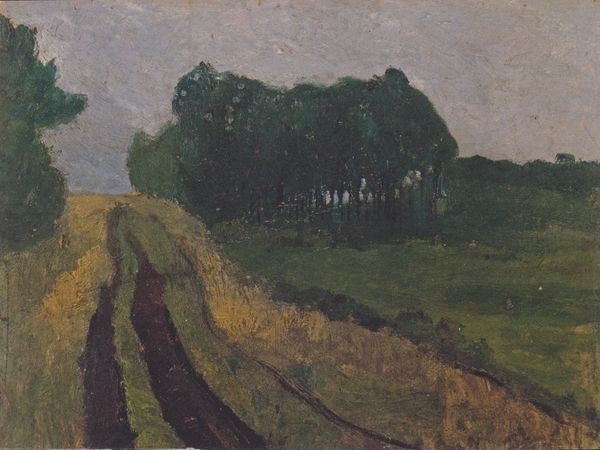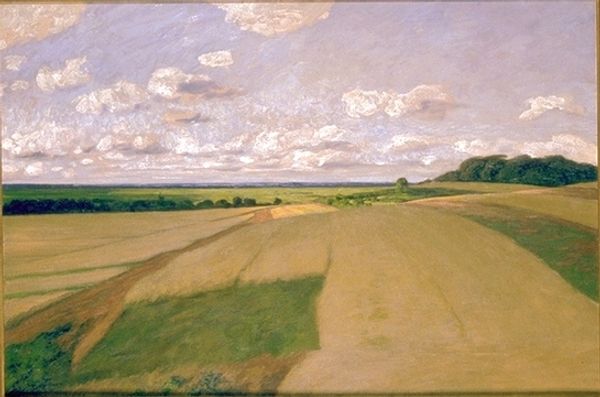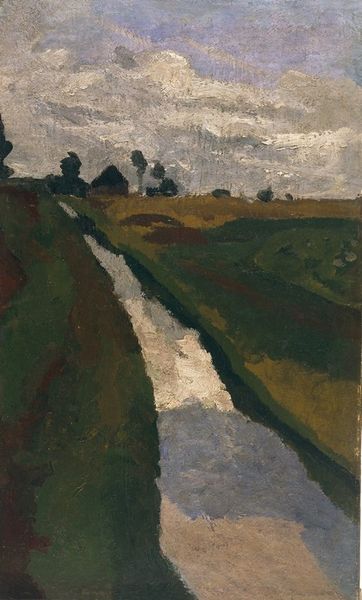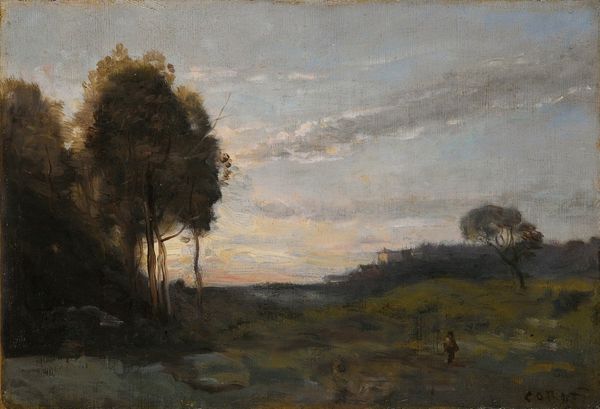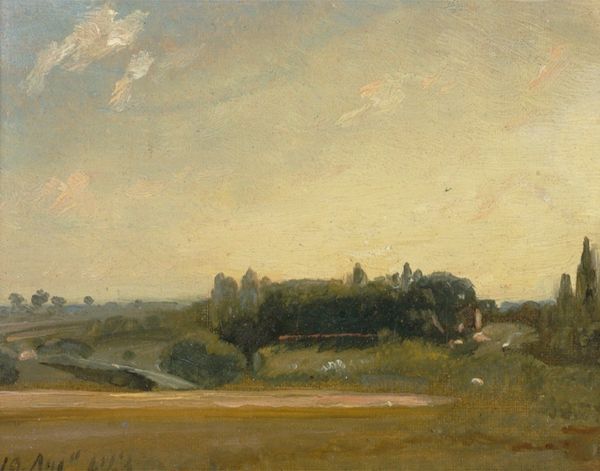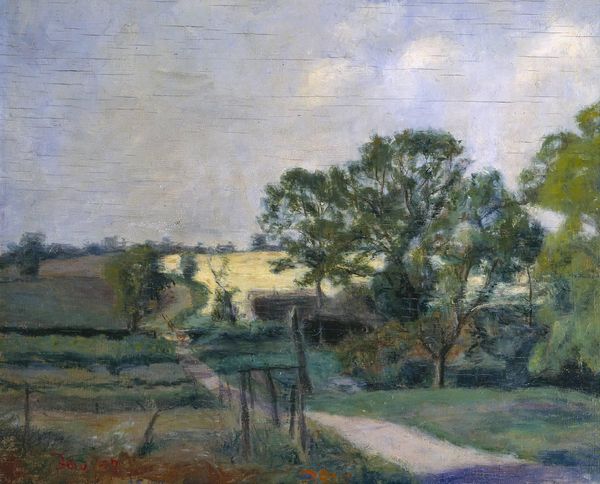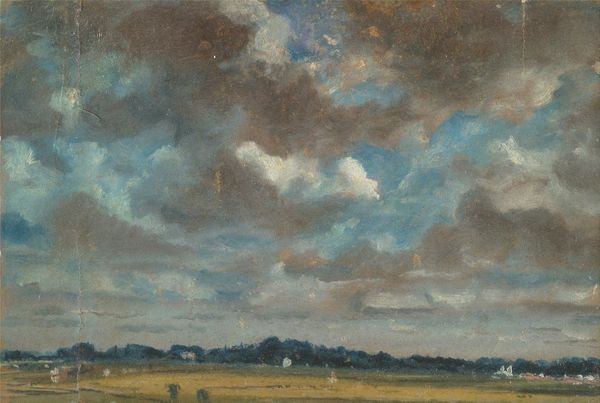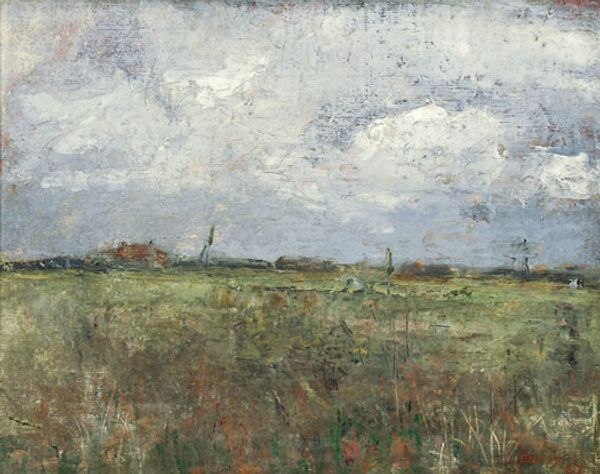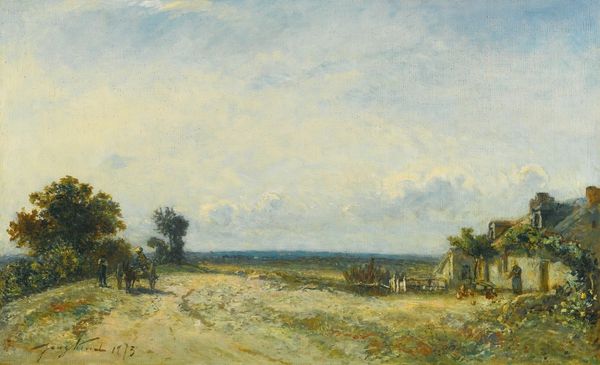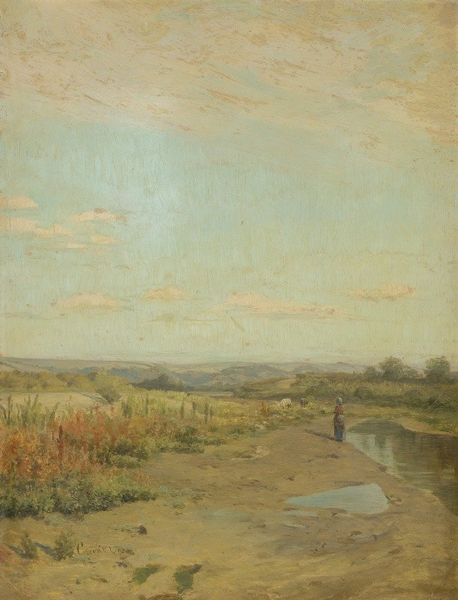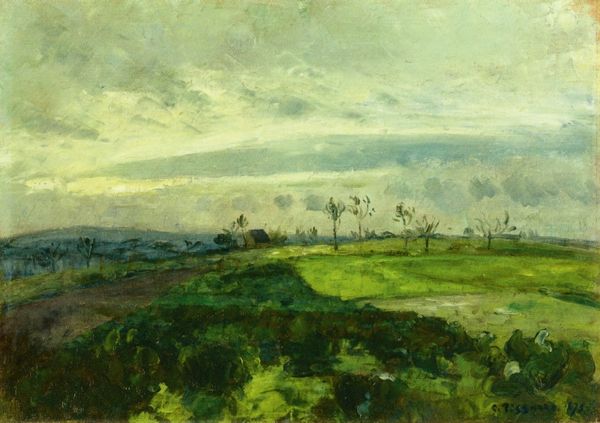
#
abstract painting
#
landscape
#
impressionist landscape
#
possibly oil pastel
#
oil painting
#
acrylic on canvas
#
underpainting
#
seascape
#
painting painterly
#
mixed medium
#
watercolor
Copyright: Public Domain: Artvee
Editor: So, here we have Carl Moll's "Stimmungsstudie Abend, Michelhausen," painted in 1888. It looks like an oil painting of a rural landscape. I'm immediately struck by the almost melancholy stillness of the scene. What do you see in this piece, especially in terms of its historical or social context? Curator: The stillness you observe is key, but I think we should interrogate that a little bit. Think about what “stillness” represented in the late 19th century. It's easy to see a quaint landscape, but this painting was created during a period of immense social upheaval. Rapid industrialization drastically altered the rural way of life across Europe. How does the work either critique or reinforce power dynamics of the period, and to what extent can the representation of landscape reveal that tension? Editor: I hadn't considered it that way. So, the "stillness" isn't necessarily peaceful, but perhaps loaded with anxieties about disappearing ways of life? Are we supposed to read the painting as longing for a lost past, or maybe a cautious acceptance of the present? Curator: Exactly. And who is the “we” in that equation? Considering class and gender, how might different viewers have experienced and interpreted the scene in 1888? Perhaps, to some, the encroaching twilight held very different connotations: a long-awaited rest after a long day's work; a refuge; the threat of darkness to a lone traveler... Think about what it might have been like for a woman working in the fields versus a landowner viewing this painting in his collection. Those diverging positions fundamentally shaped their perspective. Editor: So, the painting isn't just a picture of a place; it's a reflection of societal power structures. The absence of people becomes significant, almost like the land is waiting for something. Curator: Precisely. Art never exists in a vacuum; it actively participates in the narratives of its time, whether consciously or not. Understanding its intersectional relationships provides us with a far more profound insight into art history and society. Editor: That’s a great point, thank you for helping me view art as a function of multiple factors. Now I see more to the landscape. Curator: Excellent, it shows a lot of what it communicates with these details.
Comments
No comments
Be the first to comment and join the conversation on the ultimate creative platform.
